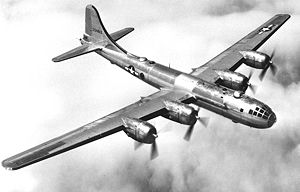@221B:
While they probably would never fight it out directly against each other, I think that the submarines of that era could be compared to each other in terms of how well they did (and how well they potentially could have) against merchant marine ships.
I’d have to place them in this order with regards to their potential:
Japan
Germany
US
UK
Italy
Of course, the Japanese squandered the potential of their subs by using them to attack warships, rather than merchant ships. So in order of actual performance, I’d say this order:
US (Japan was devastated by lack of supplies)
Germany
UK
Italy
Japan.
Part of the reason for my placing Germany below the US is because the allies, particularly the British developed effective defenses which the Japanese did not (and the Germans did not need to as they were a continental power). Not sure where to place Russia, but since (like Germany) she is a continental power, there was very little, if any, efforts regarding submarines that I am aware of.
I’d also like to point out that Germany had some very interesting submarine ideas on their drawing boards, but either chose not to (or were unable to) develop these in any meaningful fashion.
Thoughts?
Good post, and I agree with what you’ve written. I’d like to expand on what you’d written about Germany’s very interesting sub ideas. Late in the war, Germany had begun building highly advanced Type XXI U-boats. These were built in sections, to allow for a faster rate of production. These submarines had more in common with postwar nuclear subs than with their WWII contemporaries.
Most WWII-era submarines were intended to spend most of their time above water, surfacing only when threats were detected or battle expected. Type XXI U-boats were intended to spend nearly all their time underwater. The batteries of Type XXIs lasted several times longer than normal subs’ batteries before being recharged. These subs had a snorkel–a snorkel which allowed them to run their diesel engines and recharge their batteries while still submerged!
Type XXI subs had a rubber coating, making them far more difficult to detect with radar or sonar. Even if a sub was detected, it could use its battery-powered electric motor to quietly move to some other place. These subs could also move quickly! Unlike other WWII-era subs, Type XXI subs moved more quickly under the surface than they did on the surface. This was because of their hydrodynamically advanced, streamlined design. These subs also had very sophisticated electronics suites, perfectly suited to an underwater game of cat and mouse. These U-boats could fire large numbers of torpedoes in a small space of time; allowing them to strike a devastating blow and then disappear.
Most torpedoes of the era were diesel powered. Compressed air was mixed with diesel fuel and burned, thereby turning the torpedo’s propeller. The compressed air used in this left a trail of bubbles–a trail which both alerted people to the torpedo’s arrival, and provided a path back to the launching submarine. In some places, that bubble trail would glow at night due to phosphorescent microorganisms. Japan’s torpedoes used compressed oxygen with which to burn diesel. That meant a much smaller bubble trail, and significantly longer-ranged torpedoes. (The Allies’ bubble trails consisted mostly of nitrogen gas, which of course is useless for burning anything.)
Germany used electric torpedoes. These had the advantage of being much quieter and more difficult to detect than diesel-powered torpedoes. And of course they left no bubble trail. The problem with Germany’s early electric torpedoes was that the batteries weren’t that good, causing the range to be too short. But batteries improved throughout the war, thereby extending the torpedoes’ range. While Germany’s electric torpedoes never came close to the range of Japan’s Long Lance torpedoes, they nevertheless had a very respectable range by the war’s end. When that range was combined with the overall stealth and sophistication of Germany’s Type XXI U-boats, the effect was absolutely devastating.
Or would have been, had those Type XXIs seen service. In 1944, Albert Speer ordered the construction of large numbers of Type XXI U-boats. Some of those Type XXIs were in the testing/working up phase when the war ended. None saw action against the enemy. A smaller version–Type XXIII U-boats–appear to have been very effective in limited action against the enemy. However, Type XXIII U-boats could only carry two torpedoes each, and were limited to coastal duties.








